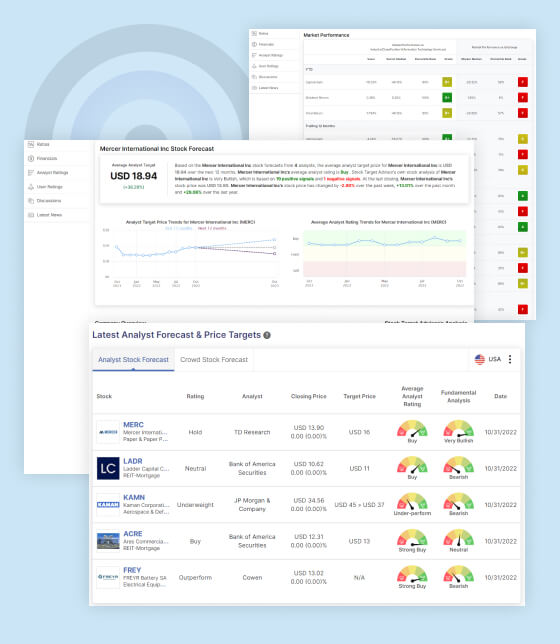Portfolio optimization can also be called investment optimization or asset allocation strategy. Regardless of what it’s called, the fundamental concept and goal remain unchanged. The goal of portfolio optimization is to develop an investment portfolio that maximizes returns while keeping risk levels within acceptable limits.
This demands spreading investment capital over multiple asset types. In this article, we look at the most common options for individuals to achieve maximum investment return within their set risk level.
What Are Stocks, Bonds, and CFDs?
Let’s explore the key features and benefits of stocks, bonds, and CFDs to understand their role in investment portfolios.
Stocks: Ownership in Companies
Owning stocks means having partial ownership (equity) in a company. When you purchase stocks, you become a shareholder or stockholder. These terms can be used interchangeably, though ‘shareholder’ is more technically precise as it specifically refers to ownership of equity shares.
You have several rights as a shareholder, including accessing company financial and administrative records, receiving dividend payments, and voting on corporate matters (for common shareholders).
If you’re new to investing and want to practice trading without financial risk, consider using top stock market simulators to refine your skills before making real trades.
Bonds: Lending for Returns
Bonds represent a different type of investment where you essentially become a lender to governments or corporations. When organizations need to fund projects or activities, they issue bonds with a specified interest rate (coupon rate) that determines regular payment amounts to investors. Government bonds, particularly US Treasury bonds, are considered among the safest investments available.
Corporate bonds typically offer higher returns but come with greater risk, as their safety depends on the issuing company’s financial health. However, even corporate bonds generally provide more stability than stocks, and bondholders have priority over stockholders in claiming assets if a company declares bankruptcy.
Contract for Difference (CFD): Trading Price Movements
Contracts for Differences (CFDs) offer a distinct approach to financial markets, allowing investors to trade on price movements without owning the underlying assets.
Through CFD trading, investors can profit from both rising and falling markets across various financial instruments, including stocks, bonds, commodities, currencies, and indexes. This flexibility to “go short” (profit from declining prices) makes CFDs unique.
CFD trading occurs through a CFD broker, who provides access to financial markets via trading platforms equipped with technical analysis tools and other trading resources.
How To Optimize Your Stocks, Bonds, and CFDs
The following are strategies that help you maximize your investment portfolio as an investor.
Diversify Your Investment Portfolio
The saying “Don’t put all your eggs in one basket” reflects the fundamental principle of diversification. Spreading your investment across multiple asset classes, industries, and regions helps minimize risks and improves prospects for consistent returns. Think about it this way: When one market area drops, your portfolio remains stable because other investments keep performing well.
A balanced investment approach could include stocks, bonds, CFDs, and commodities. An effective way to diversify your portfolio includes investing in local markets and expanding internationally.
If you’re investing for long-term wealth accumulation, stock investments can be a great vehicle. Learn how stock investments can secure your retirement by leveraging compounding returns and strategic allocation.
Asset Allocation
Successful portfolio management hinges on maintaining a balance between achieving long-term appreciation and securing short-term profits. Investment portfolios typically include stocks, bonds, and higher-risk options such as CFDs, currency trading, and cryptocurrencies. Asset allocation requires traders to recognize and accept that asset types fluctuate independently and display varying levels of volatility.
Investors who adopt aggressive trading strategies allocate more of their portfolios to volatile assets like CFDs and growth stocks. Conservative investors allocate their portfolios heavily towards bonds and blue chip stocks, which provide stability. Modern investment strategies now include mean-variance optimization (MVO) as a fundamental component, especially for data-based portfolio management approaches.
Tax Efficiency Investment
A tax efficiency investment strategy selects investment plans that minimize your tax obligations on investment returns. This approach considers three key elements: retirement account selection, investment holding periods, and security types. For example, certain bonds may be tax-exempt, so investors do not need to pay taxes on dividends received.
To successfully apply tax-efficient investing techniques, you must understand the fundamental differences between taxable and tax-advantaged investment accounts. Generally, taxable accounts are better suited for investments that lose less money to taxes.
On the other hand, tax-advantaged accounts are a suitable option for investments that typically lose a larger portion of their profits due to taxes. For example, you might hold Real Estate Investment Trusts (REITs) or high-yield corporate bonds in a tax-advantaged account like a 401(k) since their higher dividend payments and interest income would otherwise be taxed at ordinary income rates in a taxable account.
Investing is all about making informed decisions, and now you can do it for less. Get 70% off Stock Target Advisor and start optimizing your portfolio today. Grab your discount now!
Regularly Rebalance Your Portfolio
Your portfolio requires ongoing attention and adjustments. The value of your investments will vary over time because of market fluctuations and changes to investment values can cause your portfolio to become riskier than originally planned.
For example, suppose you’ve allocated 60% of your portfolio to stock investments and 40% to bonds. Exceptional stock performance could result in stocks representing 70% of your portfolio, amplifying your risk exposure.
Portfolio rebalancing through the sale of stocks and purchase of bonds returns your investments to their planned allocation and keeps them in line with your risk preferences and financial objectives. Rebalancing doesn’t have to be complicated. A quarterly, bi-annual, or annual review of your portfolio generally keeps it aligned with your objectives.
Monitor Market Trends
Investment portfolio optimization involves preparing and carefully evaluating factors like investment goals and risk tolerance. After investing, it is critical to follow financial market movements and economic conditions to reinvest or change your stance.
You can work with a competent financial advisor to create a personalized investment plan tailored to your requirements and goals. Ultimately, the key takeaway is that optimizing your portfolio increases your chances of attaining long-term financial success.
Conclusion:
Portfolio optimization is essential for achieving long-term financial success while managing investment risks. By understanding and effectively utilizing different financial instruments like stocks, bonds, and CFDs, investors can diversify their portfolios to enhance returns and stability.
Stock Target Advisor is an independent Investment Research company that specializes in stock forecasting and analysis with integrated AI.
































